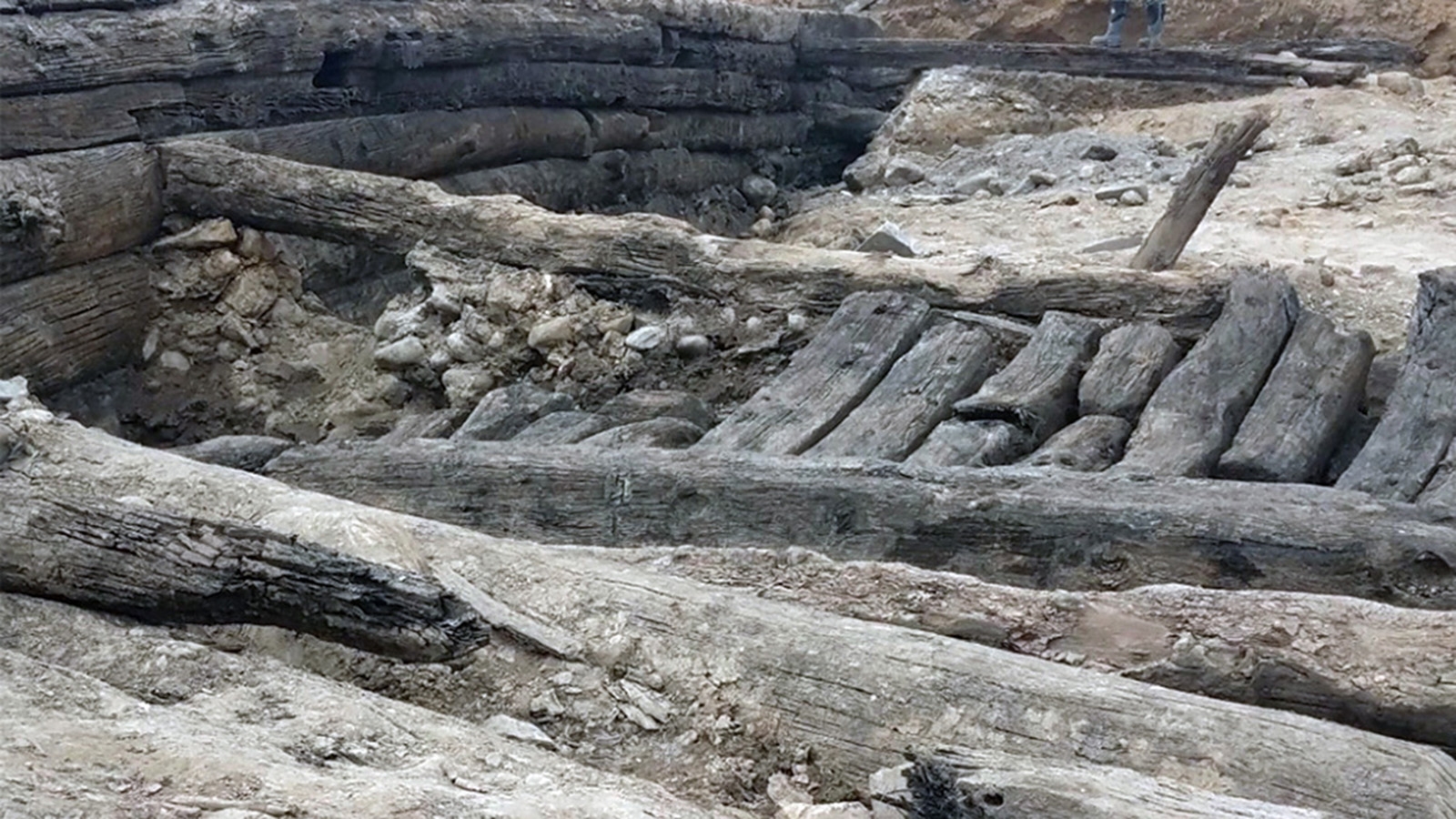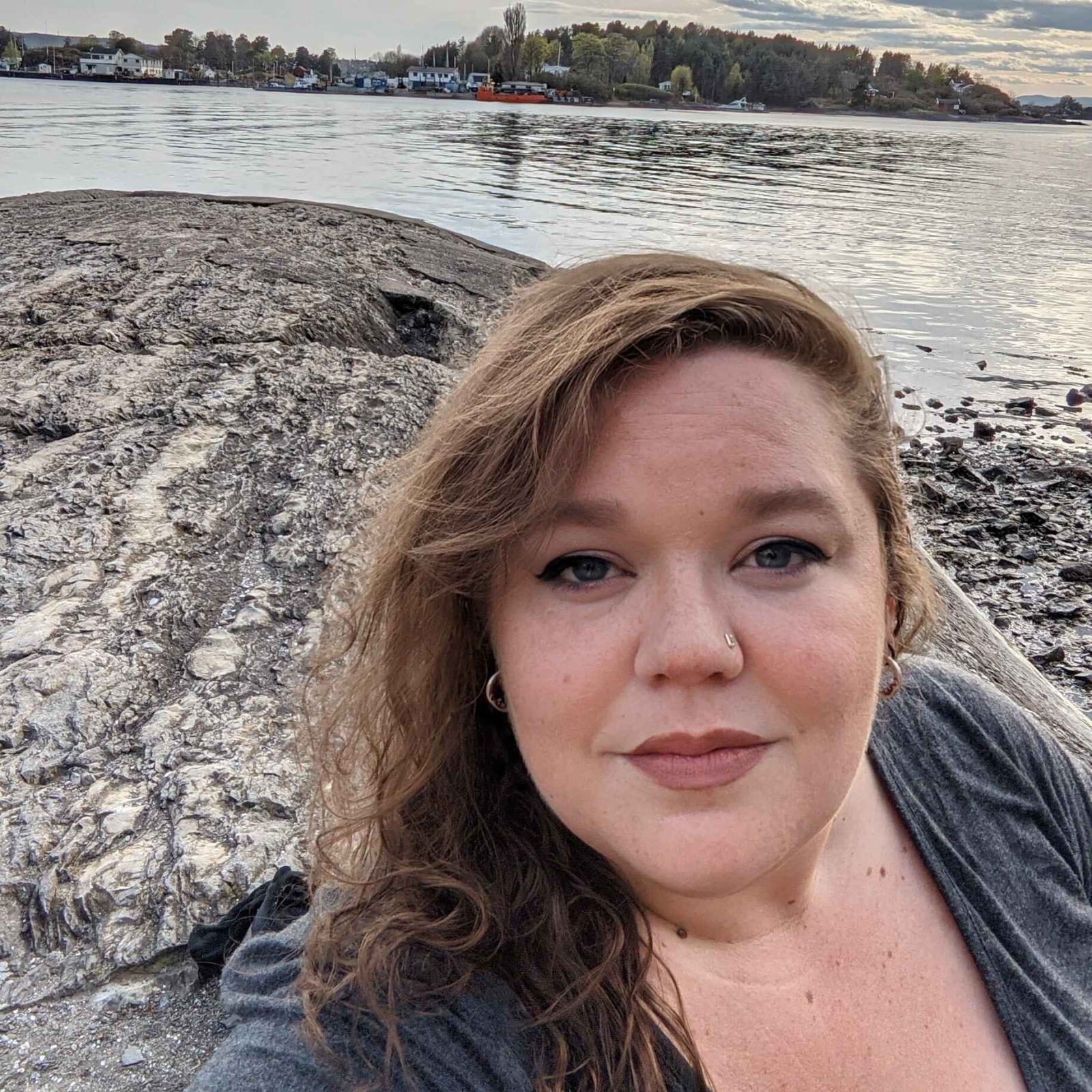Terrestrial Forensics with a Maritime Twist
Chelsea Cohen, a doctoral student in the Department of Anthropology, uses environmental archaeology to investigate the past.
It all started with an excavation site in Alexandria, Virginia. Condominiums were slated for construction on the historical city block, and archaeologists had one last stab at discovering secrets hidden to history.
“We got there at 6 a.m. and stayed until 3 p.m.,” says Chelsea Cohen, a 6th-year doctoral student in the Department of Anthropology. “It’s great—you get to play in the dirt all day.”

Three sunken ships discovered under an Alexandria, Virginia, city block turned out to be the foundation for an 18th-century wharf upon which buildings were constructed, a common practice in many major cities near the coast. (Image: Courtesy Chelsea Cohen)
There were the typical discoveries of ceramic and metal fragments, but something much more consequential—something more in line with Cohen’s preferred maritime habitat—was hiding beneath the surface of the Alexandria city block: ships, three to be exact, sunk into the river with a haul of earth-filled wooden boxes placed on top of them. The amalgamation of materials, it turns out, created the foundation for an 18th-century wharf upon which buildings were constructed, a common practice in many major cities near the coast.
“We had whole warehouses full of ships and large chunks of wharf cribbing. That meant a lot of very interesting interpretive research happening while we were digging, as opposed to waiting to get back to the lab,” says Cohen, whose academic interests span historical archaeology, maritime heritage, urban studies, and museum anthropology. She grew up near the ocean, her passions spurred by a documentary she saw in high school. “I had no idea it was a career,” she says. “I decided to go for it.”
Cohen’s dissertation, which focuses on the Upper Chesapeake region, uses the excavation findings as a kind of window into the past, illustrating the close link between the colonization of North American landscapes and seascapes.
“I’m now examining the bigger environmental history: deforestation, timber clearing, and the way that impacted how the city physically grew and developed,” says Cohen. “And then separately, how it affected the labor regimes around it, which involved a lot of economically disenfranchised laborers, including both free and enslaved Black laborers, as well as economically disenfranchised other American laborers.”
I’m now examining the bigger environmental history: deforestation, timber clearing, and the way that impacted how the city physically grew and developed.
The materials themselves offer an abundance of hints, she says.
Ships were predominantly organic at the time, and thus, most everything from hull to sails had to be either regionally sourced or traded—a procurement process that tells a tale of how various colonial settlements would have functioned.
To reinforce these findings, Cohen worked with archival records in the City of Alexandria, the Library of Congress, the National Archives, and the British National Archives at the American Philosophical Society in Philadelphia. Firsthand accounts helped reconstruct workforce dynamics, as well as the way timber moved around the Atlantic coast in the 18th century. In time, the exchange became international, with England trading with its colonies and timber from the Atlantic coast reaching Canada and the Caribbean.

Underwater archaeologist Chelsea Cohen is a 6th-year Ph.D. student in the Department of Anthropology. (Image: Courtesy Chelsea Cohen)
The timber trade also sheds light on agricultural dynamics and practices at the time. For instance, by 1749, when Alexandria was established, much of the area’s timber had already been cleared, creating the opportunity for rich farmlands and an urban commerce port, Cohen says. “One survey suggests that by the time of the American revolution, all of Virginia’s old growth timber was depleted and was being regrown as part of the political economy.”
Finally, Cohen turned to an unlikely natural source for more information: pollen. “Pollen goes down as deforestation occurs. The less overall concentration of trees, the less pollen they produce and disburse,” she says. “If you chemically treat the dirt, you can see what kind of tree pollen was blowing around in the wind, so I’m looking very heavily at the pollen record in the region.” She’s using already established publicly accessible datasets to build her own database.
It’s all toward better understanding why the three ships were sunk in the first place. The deforestation itself offers some answers. “When it came down to building wharves in the 1780s, Alexandrians didn’t have any sources of water-tight oak nearby,” says Cohen. “Some was traded for, but some had to be reused.” The ships, she adds, provided nearby sources of durable hardwood ideal for waterfront construction.
After finishing her dissertation, Cohen says she would like to get back to the sea and examine non-ship-based underwater environmental analyses.
“I am trained as an underwater archaeologist. I’d like to be back underwater and working with community groups on heritage at at-risk sites and places being encroached by sea-level rise and coastal erosion,” says Cohen. “That’s what I’d like to look toward next.”


